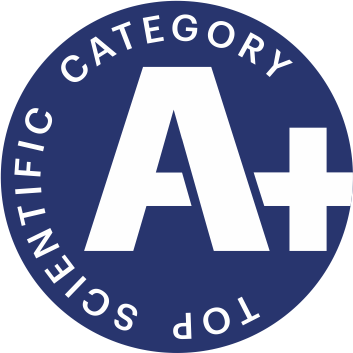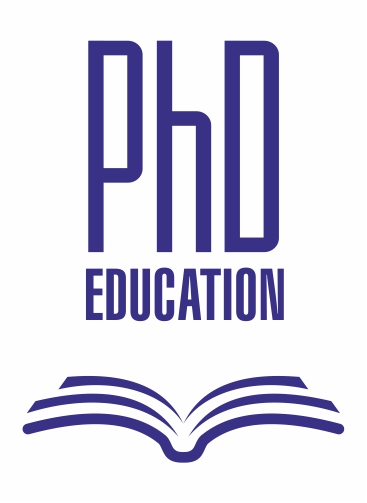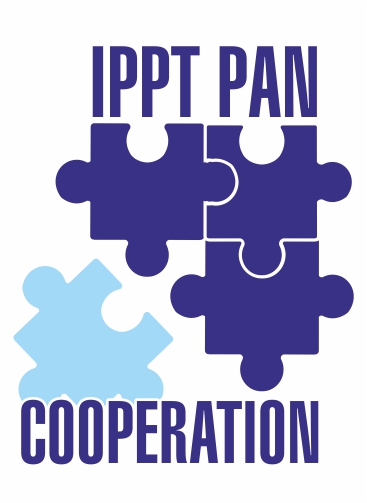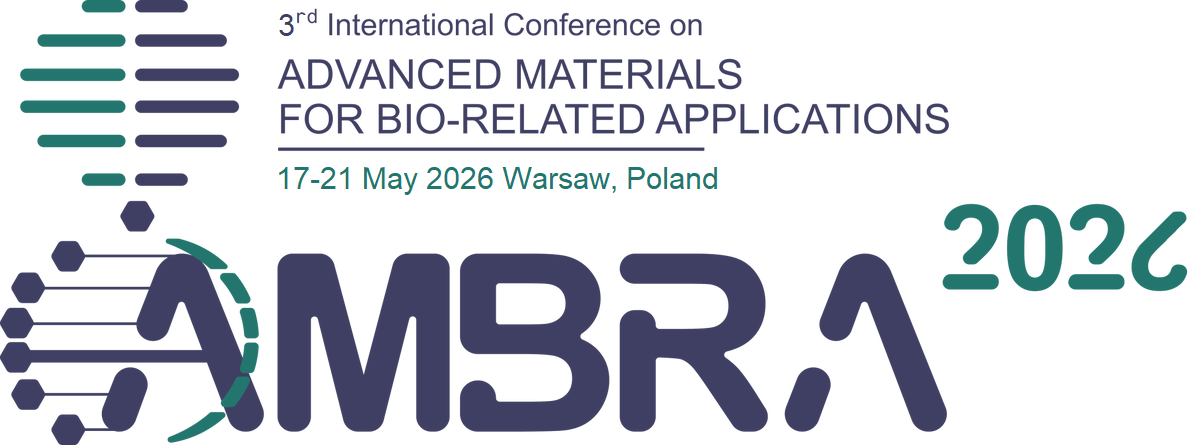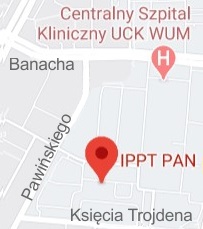| 1. |
Ahmed Abdullah A. A.♦, Alegret N.♦, Almeida B.♦, Pierini F., Zargarian S., ..., Interfacing with the Brain: How Nanotechnology Can Contribute,
ACS Nano, ISSN: 1936-0851, DOI: 10.1021/acsnano.4c10525, Vol.19, No.11, pp.10630-10717, 2025 Abstract:
Interfacing artificial devices with the human brain is the central goal of neurotechnology. Yet, our imaginations are often limited by currently available paradigms and technologies. Suggestions for brain–machine interfaces have changed over time, along with the available technology. Mechanical levers and cable winches were used to move parts of the brain during the mechanical age. Sophisticated electronic wiring and remote control have arisen during the electronic age, ultimately leading to plug-and-play computer interfaces. Nonetheless, our brains are so complex that these visions, until recently, largely remained unreachable dreams. The general problem, thus far, is that most of our technology is mechanically and/or electrically engineered, whereas the brain is a living, dynamic entity. As a result, these worlds are difficult to interface with one another. Nanotechnology, which encompasses engineered solid-state objects and integrated circuits, excels at small length scales of single to a few hundred nanometers and, thus, matches the sizes of biomolecules, biomolecular assemblies, and parts of cells. Consequently, we envision nanomaterials and nanotools as opportunities to interface with the brain in alternative ways. Here, we review the existing literature on the use of nanotechnology in brain–machine interfaces and look forward in discussing perspectives and limitations based on the authors’ expertise across a range of complementary disciplines─from neuroscience, engineering, physics, and chemistry to biology and medicine, computer science and mathematics, and social science and jurisprudence. We focus on nanotechnology but also include information from related fields when useful and complementary. Affiliations:
| Ahmed Abdullah A. A. | - | other affiliation | | Alegret N. | - | other affiliation | | Almeida B. | - | other affiliation | | Pierini F. | - | IPPT PAN | | Zargarian S. | - | IPPT PAN |
| 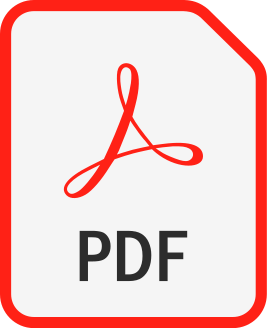 |
| 2. |
Zakrzewska A., Nakielski P., Truong Yen B.♦, Gualandi C.♦, Velino C.♦, Zargarian S., Lanzi M.♦, Kosik-Kozioł A., Król J., Pierini F., “Green” Cross-Linking of Poly(Vinyl Alcohol)-Based Nanostructured Biomaterials: From Eco-Friendly Approaches to Practical Applications,
WIREs Nanomedicine and Nanobiotechnology, ISSN: 1939-0041, DOI: 10.1002/wnan.70017, Vol.17, No.3, pp.e70017-1-33, 2025 Abstract:
Recently, a growing need for sustainable materials in various industries, especially biomedical, environmental, and packaging applications, has been observed. Poly(vinyl alcohol) (PVA) is a versatile and widely used polymer, valued for its biocompatibility, water solubility, and easy processing, e.g., forming nanofibers via electrospinning. As a result of cross-linking, PVA turns into a three-dimensional structure—hydrogel with unusual sorption properties and mimicry of biological tissues. However, traditional cross-linking methods often involve toxic chemicals and harsh conditions, which can limit its eco-friendly potential and raise concerns about environmental impact. “Green” cross-linking approaches, such as the use of natural cross-linkers, freeze–thawing, enzymatic processes, irradiation, heat treatment, or immersion in alcohol, offer an environmentally friendly alternative that aligns with global trends toward sustainability. These methods not only reduce the use of harmful substances but also enhance the biodegradability and safety of the materials. By reviewing and analyzing the latest advancements in “green” PVA cross-linking approaches, this review provides a comprehensive overview of current techniques, their advantages, limitations, and potential applications. The main emphasis is placed on PVA nanostructured forms and applications of PVA-based biomaterials in areas such as wound dressings, drug delivery systems, tissue engineering, biological filters, and biosensors. Moreover, this article will contribute to the broader scientific understanding of how the materials based on PVA can be optimized both in terms of “greener” and safer production, as well as adjusting the final platform properties. Keywords:
cross-linking, eco-friendly approaches, nanostructured biomaterials, poly(vinyl alcohol) Affiliations:
| Zakrzewska A. | - | IPPT PAN | | Nakielski P. | - | IPPT PAN | | Truong Yen B. | - | other affiliation | | Gualandi C. | - | University of Bologna (IT) | | Velino C. | - | other affiliation | | Zargarian S. | - | IPPT PAN | | Lanzi M. | - | University of Bologna (IT) | | Kosik-Kozioł A. | - | IPPT PAN | | Król J. | - | IPPT PAN | | Pierini F. | - | IPPT PAN |
|  |
| 3. |
Zargarian Seyed S., Suárez-García S.♦, Saiz-Poseu J.♦, Zuppiroli L.♦, Lanzi M.♦, Ruiz-Molina D.♦, Pierini F., Light-Activated Superhydrophobicity of Sustainable Micro-Structured Spent Coffee Grounds-Based Interfaces via Fatty Acids Modulation,
ChemSusChem, ISSN: 1864-5631, DOI: 10.1002/cssc.202402254, Vol.18, No.10, pp.e202402254-1-14, 2025 Abstract:
The global consumption of coffee results in the disposal of vast amounts of spent coffee grounds (SCG), posing significant environmental challenges. Herein, we address this issue by developing an innovative, eco-friendly method to achieve superhydrophobicity using SCG. Repurposing this abundant biowaste, we developed a sustainable approach that avoids the use of harsh chemicals and energy-intensive processes typically associated with conventional methods. Our procedure involves wet ball milling of SCG in ethanol to produce microparticles, followed by electrospraying to create a micro-structured interface. A mild annealing treatment at 90 °C successfully transformed the SCG interface from hydrophilic to superhydrophobic, reaching a contact angle of approximately 151° and a rolling-off angle of 8°. The resultant interface exhibited remarkable self-cleaning properties, effectively repelling various liquids. XPS analysis revealed that the migration of fatty acids to the surface during annealing played a crucial role in lowering surface energy, thereby driving the hydrophilic-to-superhydrophobic transition. Furthermore, we demonstrated that solar-induced heating can effectively activate the same superhydrophobic properties, providing a practical and energy-efficient alternative to traditional thermal treatments. This method illustrates the role of light-activated fatty acid modulation in achieving superhydrophobicity and highlights the potential of SCG biowaste as a valuable resource for sustainable material applications. Affiliations:
| Zargarian Seyed S. | - | IPPT PAN | | Suárez-García S. | - | other affiliation | | Saiz-Poseu J. | - | other affiliation | | Zuppiroli L. | - | University of Bologna (IT) | | Lanzi M. | - | University of Bologna (IT) | | Ruiz-Molina D. | - | other affiliation | | Pierini F. | - | IPPT PAN |
|  |
| 4. |
Zakrzewska A., Kosik-Kozioł A., Zargarian S., Zanoni M.♦, Gualandi C.♦, Lanzi M.♦, Pierini F., Lemon Juice-Infused PVA Nanofibers for the Development of Sustainable Antioxidant and Antibacterial Electrospun Hydrogel Biomaterials,
BIOMACROMOLECULES, ISSN: 1525-7797, DOI: 10.1021/acs.biomac.4c01466, Vol.26, No.1, pp.654-669, 2025 Abstract:
Cross-linking bonds adjacent polymer chains into a three-dimensional network. Cross-linked poly(vinyl alcohol) (PVA) turns into a hydrogel, insoluble structure exhibiting outstanding sorption properties. As an electrospinnable polymer, PVA enables the creation of nanofibrous hydrogels resembling biological tissues, thus ideal for nature-inspired platforms. PVA properties are easily adjustable through additives and an appropriate cross-linking method. Drawing inspiration from environmentally safe approaches, this work developed a new “green” method of low-temperature PVA cross-linking. Nanofibers were electrospun from a precursor solution of PVA dissolved in fresh lemon juice, stabilized by heating at 60 °C for 7 days, and thoroughly characterized. The obtained nanoplatform demonstrated long-term stability and enhanced mechanical properties. Its biocompatibility was confirmed, and its antibacterial and health-promoting effects were attributed to lemon juice-rich in vitamin C, a potent antioxidant with anti-inflammatory properties. The developed system has future potential for use in the biomedical engineering field as a dressing accelerating wound healing. Affiliations:
| Zakrzewska A. | - | IPPT PAN | | Kosik-Kozioł A. | - | IPPT PAN | | Zargarian S. | - | IPPT PAN | | Zanoni M. | - | other affiliation | | Gualandi C. | - | University of Bologna (IT) | | Lanzi M. | - | University of Bologna (IT) | | Pierini F. | - | IPPT PAN |
|  |
| 5. |
Zargarian Seyed S., Rinoldi C., Ziai Y., Zakrzewska A., Fiorelli R., Gazińska M.♦, Marinelli M.♦, Majkowska M.♦, Hottowy P.♦, Mindur B.♦, Czajkowski R.♦, Kublik E.♦, Nakielski P., Lanzi M.♦, Kaczmarek L.♦, Pierini F., Chronic Probing of Deep Brain Neuronal Activity Using Nanofibrous Smart Conducting Hydrogel-Based Brain–Machine Interface Probes,
Small Science, ISSN: 2688-4046, DOI: 10.1002/smsc.202400463, Vol.5, No.5, pp.2400463-1-19, 2025 Abstract:
The mechanical mismatch between microelectrode of brain–machine interfaces (BMIs) and soft brain tissue during electrophysiological investigations leads to inflammation, glial scarring, and compromising performance. Herein, a nanostructured, stimuli-responsive, conductive, and semi-interpenetrating polymer network hydrogel-based coated BMIs probe is introduced. The system interface is composed of a cross-linkable poly(N-isopropylacrylamide)-based copolymer and regioregular poly[3-(6-methoxyhexyl)thiophene] fabricated via electrospinning and integrated into a neural probe. The coating's nanofibrous architecture offers a rapid swelling response and faster shape recovery compared to bulk hydrogels. Moreover, the smart coating becomes more conductive at physiological temperatures, which improves signal transmission efficiency and enhances its stability during chronic use. Indeed, detecting acute neuronal deep brain signals in a mouse model demonstrates that the developed probe can record high-quality signals and action potentials, favorably modulating impedance and capacitance. Evaluation of in vivo neuronal activity and biocompatibility in chronic configuration shows the successful recording of deep brain signals and a lack of substantial inflammatory response in the long-term. The development of conducting fibrous hydrogel bio-interface demonstrates its potential to overcome the limitations of current neural probes, highlighting its promising properties as a candidate for long-term, high-quality detection of neuronal activities for deep brain applications such as BMIs. Affiliations:
| Zargarian Seyed S. | - | IPPT PAN | | Rinoldi C. | - | IPPT PAN | | Ziai Y. | - | IPPT PAN | | Zakrzewska A. | - | IPPT PAN | | Fiorelli R. | - | IPPT PAN | | Gazińska M. | - | other affiliation | | Marinelli M. | - | other affiliation | | Majkowska M. | - | other affiliation | | Hottowy P. | - | other affiliation | | Mindur B. | - | other affiliation | | Czajkowski R. | - | other affiliation | | Kublik E. | - | other affiliation | | Nakielski P. | - | IPPT PAN | | Lanzi M. | - | University of Bologna (IT) | | Kaczmarek L. | - | other affiliation | | Pierini F. | - | IPPT PAN |
|  |
| 6. |
Shah Syed A., Sohail M.♦, Nakielski P., Rinoldi C., Zargarian Seyed S., Kosik-Kozioł A., Yasamin Z., Ali Haghighat Bayan M., Zakrzewska A., Rybak D., Bartolewska M., Pierini F., Integrating Micro- and Nanostructured Platforms and Biological Drugs to Enhance Biomaterial-Based Bone Regeneration Strategies,
BIOMACROMOLECULES, ISSN: 1525-7797, DOI: 10.1021/acs.biomac.4c01133, pp.A-W, 2024 Abstract:
Bone defects resulting from congenital anomalies and trauma pose significant clinical challenges for orthopedics surgeries, where bone tissue engineering (BTE) aims to address these challenges by repairing defects that fail to heal spontaneously. Despite numerous advances, BTE still faces several challenges, i.e., difficulties in detecting and tracking implanted cells, high costs, and regulatory approval hurdles. Biomaterials promise to revolutionize bone grafting procedures, heralding a new era of regenerative medicine and advancing patient outcomes worldwide. Specifically, novel bioactive biomaterials have been developed that promote cell adhesion, proliferation, and differentiation and have osteoconductive and osteoinductive characteristics, stimulating tissue regeneration and repair, particularly in complex skeletal defects caused by trauma, degeneration, and neoplasia. A wide array of biological therapeutics for bone regeneration have emerged, drawing from the diverse spectrum of gene therapy, immune cell interactions, and RNA molecules. This review will provide insights into the current state and potential of future strategies for bone regeneration. Affiliations:
| Shah Syed A. | - | IPPT PAN | | Sohail M. | - | other affiliation | | Nakielski P. | - | IPPT PAN | | Rinoldi C. | - | IPPT PAN | | Zargarian Seyed S. | - | IPPT PAN | | Kosik-Kozioł A. | - | IPPT PAN | | Yasamin Z. | - | IPPT PAN | | Ali Haghighat Bayan M. | - | IPPT PAN | | Zakrzewska A. | - | IPPT PAN | | Rybak D. | - | IPPT PAN | | Bartolewska M. | - | IPPT PAN | | Pierini F. | - | IPPT PAN |
|  |
| 7. |
Rybak D., Rinoldi C., Nakielski P., Du J.♦, Haghighat Bayan Mohammad A., Zargarian S.S., Pruchniewski M.♦, Li X.♦, Strojny-Cieślak B.♦, Ding B.♦, Pierini F., Injectable and self-healable nano-architectured hydrogel for NIR-light responsive chemo- and photothermal bacterial eradication,
JOURNAL OF MATERIALS CHEMISTRY B , ISSN: 2050-7518, DOI: 10.1039/D3TB02693K, Vol.12, No.7, pp.1905-1925, 2024 Abstract:
Hydrogels with multifunctional properties activated at specific times have gained significant attention in the biomedical field. As bacterial infections can cause severe complications that negatively impact wound repair, herein, we present the development of a stimuli-responsive, injectable, and in situ-forming hydrogel with antibacterial, self-healing, and drug-delivery properties. In this study, we prepared a Pluronic F-127 (PF127) and sodium alginate (SA)-based hydrogel that can be targeted to a specific tissue via injection. The PF127/SA hydrogel was incorporated with polymeric short-filaments (SFs) containing an anti-inflammatory drug – ketoprofen, and stimuli-responsive polydopamine (PDA) particles. The hydrogel, after injection, could be in situ gelated at the body temperature, showing great in vitro stability and self-healing ability after 4 h of incubation. The SFs and PDA improved the hydrogel injectability and compressive strength. The introduction of PDA significantly accelerated the KET release under near-infrared light exposure and extended its release validity period. The excellent composites’ photo-thermal performance led to antibacterial activity against representative Gram-positive and Gram-negative bacteria, resulting in 99.9% E. coli and S. aureus eradication after 10 min of NIR light irradiation. In vitro, fibroblast L929 cell studies confirmed the materials’ biocompatibility and paved the way toward further in vivo and clinical application of the system for chronic wound treatments. Affiliations:
| Rybak D. | - | IPPT PAN | | Rinoldi C. | - | IPPT PAN | | Nakielski P. | - | IPPT PAN | | Du J. | - | University of California (US) | | Haghighat Bayan Mohammad A. | - | IPPT PAN | | Zargarian S.S. | - | IPPT PAN | | Pruchniewski M. | - | other affiliation | | Li X. | - | Donghua University (CN) | | Strojny-Cieślak B. | - | other affiliation | | Ding B. | - | Donghua University (CN) | | Pierini F. | - | IPPT PAN |
|  |
| 8. |
Haghighat Bayan M.A., Rinoldi C., Rybak D., Zargarian S.S., Zakrzewska A., Miler O., Põhako-Palu K.♦, Zhang S.♦, Stobnicka-Kupiec A.♦, Górny Rafał L.♦, Nakielski P., Kogermann K.♦, De Sio L.♦, Ding B.♦, Pierini F., Engineering surgical face masks with photothermal and photodynamic plasmonic nanostructures for enhancing filtration and on-demand pathogen eradication,
Biomaterials Science, ISSN: 2047-4849, DOI: 10.1039/d3bm01125a, Vol.12, No.4, pp.949-963, 2024 Abstract:
The shortage of face masks and the lack of antipathogenic functions has been significant since the recent pandemic's inception. Moreover, the disposal of an enormous number of contaminated face masks not only carries a significant environmental impact but also escalates the risk of cross-contamination. This study proposes a strategy to upgrade available surgical masks into antibacterial masks with enhanced particle and bacterial filtration. Plasmonic nanoparticles can provide photodynamic and photothermal functionalities for surgical masks. For this purpose, gold nanorods act as on-demand agents to eliminate pathogens on the surface of the masks upon near-infrared light irradiation. Additionally, the modified masks are furnished with polymer electrospun nanofibrous layers. These electrospun layers can enhance the particle and bacterial filtration efficiency, not at the cost of the pressure drop of the mask. Consequently, fabricating these prototype masks could be a practical approach to upgrading the available masks to alleviate the environmental toll of disposable face masks. Affiliations:
| Haghighat Bayan M.A. | - | IPPT PAN | | Rinoldi C. | - | IPPT PAN | | Rybak D. | - | IPPT PAN | | Zargarian S.S. | - | IPPT PAN | | Zakrzewska A. | - | IPPT PAN | | Miler O. | - | IPPT PAN | | Põhako-Palu K. | - | other affiliation | | Zhang S. | - | other affiliation | | Stobnicka-Kupiec A. | - | other affiliation | | Górny Rafał L. | - | other affiliation | | Nakielski P. | - | IPPT PAN | | Kogermann K. | - | other affiliation | | De Sio L. | - | Sapienza University of Rome (IT) | | Ding B. | - | Donghua University (CN) | | Pierini F. | - | IPPT PAN |
|  |
| 9. |
Haghighat Bayan M.A., Rinoldi C., Kosik-Kozioł A., Bartolewska M., Rybak D., Zargarian S., Shah S., Krysiak Z., Zhang S.♦, Lanzi M.♦, Nakielski P., Ding B.♦, Pierini F., Solar-to-NIR Light Activable PHBV/ICG Nanofiber-Based Face Masks with On-Demand Combined Photothermal and Photodynamic Antibacterial Properties,
Advanced Materials Technologies, ISSN: 2365-709X, DOI: 10.1002/admt.202400450, pp.2400450-1-18, 2024 Abstract:
Hierarchical nanostructures fabricate by electrospinning in combination with light-responsive agents offer promising scenarios for developing novel activable antibacterial interfaces. This study introduces an innovative antibacterial face mask developed from poly(3-hydroxybutyrate-co-3-hydroxyvalerate) (PHBV) nanofibers integrated with indocyanine green (ICG), targeting the urgent need for effective antimicrobial protection for community health workers. The research focuses on fabricating and characterizing this nanofibrous material, evaluating the mask's mechanical and chemical properties, investigating its particle filtration, and assessing antibacterial efficacy under photothermal conditions for reactive oxygen species (ROS) generation. The PHBV/ICG nanofibers are produced using an electrospinning process, and the nanofibrous construct's morphology, structure, and photothermal response are investigated. The antibacterial efficacy of the nanofibers is tested, and substantial bacterial inactivation under both near-infrared (NIR) and solar irradiation is demonstrated due to the photothermal response of the nanofibers. The material's photothermal response is further analyzed under cyclic irradiation to simulate real-world conditions, confirming its durability and consistency. This study highlights the synergistic impact of PHBV and ICG in enhancing antibacterial activity, presenting a biocompatible and environmentally friendly solution. These findings offer a promising path for developing innovative face masks that contribute significantly to the field of antibacterial materials and solve critical public health challenges. Affiliations:
| Haghighat Bayan M.A. | - | IPPT PAN | | Rinoldi C. | - | IPPT PAN | | Kosik-Kozioł A. | - | IPPT PAN | | Bartolewska M. | - | IPPT PAN | | Rybak D. | - | IPPT PAN | | Zargarian S. | - | IPPT PAN | | Shah S. | - | IPPT PAN | | Krysiak Z. | - | IPPT PAN | | Zhang S. | - | other affiliation | | Lanzi M. | - | University of Bologna (IT) | | Nakielski P. | - | IPPT PAN | | Ding B. | - | Donghua University (CN) | | Pierini F. | - | IPPT PAN |
|  |
| 10. |
Zargarian S., Zakrzewska A., Kosik-Kozioł A., Bartolewska M., Shah S., Li X.♦, Su Q.♦, Petronella F.♦, Marinelli M.♦, De Sio L.♦, Lanzi M.♦, Ding B.♦, Pierini F., Advancing resource sustainability with green photothermal materials: Insights from organic waste-derived and bioderived sources,
nanotechnology reviews, ISSN: 2191-9097, DOI: 10.1515/ntrev-2024-0100, Vol.13, No.1, pp.20240100-1-39, 2024 Abstract:
Recently, there has been a surge of interest in developing new types of photothermal materials driven by the ongoing demand for efficient energy conversion, environmental concerns, and the need for sustainable solutions. However, many existing photothermal materials face limitations such as high production costs or narrow absorption bands, hindering their widespread application. In response to these challenges, researchers have redirected their focus toward harnessing the untapped potential of organic waste-derived and bioderived materials. These materials, with photothermal properties derived from their intrinsic composition or transformative processes, offer a sustainable and cost-effective alternative. This review provides an extended categorization of organic waste-derived and bioderived materials based on their origin. Additionally, we investigate the mechanisms underlying the photothermal properties of these materials. Key findings highlight their high photothermal efficiency and versatility in applications such as water and energy harvesting, desalination, biomedical applications, deicing, waste treatment, and environmental remediation. Through their versatile utilization, they demonstrate immense potential in fostering sustainability and support the transition toward a greener and more resilient future. The authors’ perspective on the challenges and potentials of platforms based on these materials is also included, highlighting their immense potential for real-world implementation. Keywords:
photothermal materials, organic waste valorization, bioderived materials Affiliations:
| Zargarian S. | - | IPPT PAN | | Zakrzewska A. | - | IPPT PAN | | Kosik-Kozioł A. | - | IPPT PAN | | Bartolewska M. | - | IPPT PAN | | Shah S. | - | IPPT PAN | | Li X. | - | Donghua University (CN) | | Su Q. | - | other affiliation | | Petronella F. | - | other affiliation | | Marinelli M. | - | other affiliation | | De Sio L. | - | other affiliation | | Lanzi M. | - | University of Bologna (IT) | | Ding B. | - | Donghua University (CN) | | Pierini F. | - | IPPT PAN |
|  |
| 11. |
Zargarian S., Kupikowska-Stobba B., Kosik-Kozioł A., Bartolewska M., Zakrzewska A., Rybak D., Bochenek K., Osial M., Pierini F., Light-responsive biowaste-derived and bio-inspired textiles: Dancing between bio-friendliness and antibacterial functionality,
Materials Today Chemistry, ISSN: 2468-5194, DOI: 10.1016/j.mtchem.2024.102281, Vol.41, pp.102281-1-15, 2024 Abstract:
Functional antibacterial textiles fabricated from a hybrid of organic waste-derived and bio-inspired materials offer sustainable solutions for preventing microbial infections. In this work, we developed a novel antibacterial textile created through the valorization of spent coffee grounds (SCG). Electrospinning and electrospraying techniques were employed to integrate the biowaste within a polymeric nanofiber matrix, ensuring uniform particle distribution and providing structural support for enhanced applicability. Modification with polydopamine (PDA) significantly enhanced the textile's photothermal performance. Specific attention was paid to understanding the relation between temperature change and key variables, including the surrounding liquid volume, textile layer stacking, and applied laser power. Developed platforms demonstrated excellent photothermal stability. While the SCG-based textile demonstrated exceptional biocompatibility, the PDA-modified textile effectively eradicated Staphylococcus aureus (S. aureus) under near-infrared (NIR) irradiation. The developed textiles in our work demonstrate a dynamic balance between biocompatibility and on-demand antibacterial functionality, offering adaptable solutions in accordance with the desired application. Keywords:
Organic waste valorization, Spent coffee grounds, Micro-nanostructured textiles, Bio-inspired photothermal agents, Polydopamine, Antibacterial textiles Affiliations:
| Zargarian S. | - | IPPT PAN | | Kupikowska-Stobba B. | - | IPPT PAN | | Kosik-Kozioł A. | - | IPPT PAN | | Bartolewska M. | - | IPPT PAN | | Zakrzewska A. | - | IPPT PAN | | Rybak D. | - | IPPT PAN | | Bochenek K. | - | IPPT PAN | | Osial M. | - | IPPT PAN | | Pierini F. | - | IPPT PAN |
|  |
| 12. |
Ziai Y., Lanzi M.♦, Rinoldi C., Zargarian S.S., Zakrzewska A., Kosik-Kozioł A., Nakielski P., Pierini F., Developing strategies to optimize the anchorage between electrospun nanofibers and hydrogels for multi-layered plasmonic biomaterials,
Nanoscale Advances, ISSN: 2516-0230, DOI: 10.1039/d3na01022h, Vol.6, No.4, pp.1246-1258, 2024 Abstract:
Polycaprolactone (PCL), a recognized biopolymer, has emerged as a prominent choice for diverse biomedical endeavors due to its good mechanical properties, exceptional biocompatibility, and tunable properties. These attributes render PCL a suitable alternative biomaterial to use in biofabrication, especially the electrospinning technique, facilitating the production of nanofibers with varied dimensions and functionalities. However, the inherent hydrophobicity of PCL nanofibers can pose limitations. Conversely, acrylamide-based hydrogels, characterized by their interconnected porosity, significant water retention, and responsive behavior, present an ideal matrix for numerous biomedical applications. By merging these two materials, one can harness their collective strengths while potentially mitigating individual limitations. A robust interface and effective anchorage during the composite fabrication are pivotal for the optimal performance of the nanoplatforms. Nanoplatforms are subject to varying degrees of tension and physical alterations depending on their specific applications. This is particularly pertinent in the case of layered nanostructures, which require careful consideration to maintain structural stability and functional integrity in their intended applications. In this study, we delve into the influence of the fiber dimensions, orientation and surface modifications of the nanofibrous layer and the hydrogel layer's crosslinking density on their intralayer interface to determine the optimal approach. Comprehensive mechanical pull-out tests offer insights into the interfacial adhesion and anchorage between the layers. Notably, plasma treatment of the hydrophobic nanofibers and the stiffness of the hydrogel layer significantly enhance the mechanical effort required for fiber extraction from the hydrogels, indicating improved anchorage. Furthermore, biocompatibility assessments confirm the potential biomedical applications of the proposed nanoplatforms. Affiliations:
| Ziai Y. | - | IPPT PAN | | Lanzi M. | - | University of Bologna (IT) | | Rinoldi C. | - | IPPT PAN | | Zargarian S.S. | - | IPPT PAN | | Zakrzewska A. | - | IPPT PAN | | Kosik-Kozioł A. | - | IPPT PAN | | Nakielski P. | - | IPPT PAN | | Pierini F. | - | IPPT PAN |
|  |
| 13. |
Rinoldi C., Ziai Y., Zargarian S.S., Nakielski P., Zembrzycki K., Haghighat Bayan M.A., Zakrzewska A., Fiorelli R., Lanzi M.♦, Kostrzewska-Księżyk A.♦, Czajkowski R.♦, Kublik E.♦, Kaczmarek L.♦, Pierini F., In Vivo Chronic Brain Cortex Signal Recording Based on a Soft Conductive Hydrogel Biointerface,
ACS Applied Materials and Interfaces, ISSN: 1944-8244, DOI: 10.1021/acsami.2c17025, Vol.15, No.5, pp.6283-6296, 2023 Abstract:
In neuroscience, the acquisition of neural signals from the brain cortex is crucial to analyze brain processes, detect neurological disorders, and offer therapeutic brain–computer interfaces. The design of neural interfaces conformable to the brain tissue is one of today’s major challenges since the insufficient biocompatibility of those systems provokes a fibrotic encapsulation response, leading to an inaccurate signal recording and tissue damage precluding long-term/permanent implants. The design and production of a novel soft neural biointerface made of polyacrylamide hydrogels loaded with plasmonic silver nanocubes are reported herein. Hydrogels are surrounded by a silicon-based template as a supporting element for guaranteeing an intimate neural-hydrogel contact while making possible stable recordings from specific sites in the brain cortex. The nanostructured hydrogels show superior electroconductivity while mimicking the mechanical characteristics of the brain tissue. Furthermore, in vitro biological tests performed by culturing neural progenitor cells demonstrate the biocompatibility of hydrogels along with neuronal differentiation. In vivo chronic neuroinflammation tests on a mouse model show no adverse immune response toward the nanostructured hydrogel-based neural interface. Additionally, electrocorticography acquisitions indicate that the proposed platform permits long-term efficient recordings of neural signals, revealing the suitability of the system as a chronic neural biointerface. Keywords:
brain−machine interface,conductive hydrogels,nanostructured biomaterials,in vitro and in vivo biocompatibility,long-term neural recording Affiliations:
| Rinoldi C. | - | IPPT PAN | | Ziai Y. | - | IPPT PAN | | Zargarian S.S. | - | IPPT PAN | | Nakielski P. | - | IPPT PAN | | Zembrzycki K. | - | IPPT PAN | | Haghighat Bayan M.A. | - | IPPT PAN | | Zakrzewska A. | - | IPPT PAN | | Fiorelli R. | - | IPPT PAN | | Lanzi M. | - | University of Bologna (IT) | | Kostrzewska-Księżyk A. | - | other affiliation | | Czajkowski R. | - | other affiliation | | Kublik E. | - | other affiliation | | Kaczmarek L. | - | other affiliation | | Pierini F. | - | IPPT PAN |
|  |
| 14. |
Ziai Y., Zargarian S. S., Rinoldi C., Nakielski P., Sola A.♦, Lanzi M.♦, Truong Yen B.♦, Pierini F., Conducting polymer-based nanostructured materials for brain–machine interfaces,
WIREs Nanomedicine and Nanobiotechnology, ISSN: 1939-0041, DOI: 10.1002/wnan.1895, Vol.15, No.5, pp.e1895-1-33, 2023 Abstract:
As scientists discovered that raw neurological signals could translate into bioelectric information, brain–machine interfaces (BMI) for experimental and clinical studies have experienced massive growth. Developing suitable materials for bioelectronic devices to be used for real-time recording and data digitalizing has three important necessitates which should be covered. Biocompatibility, electrical conductivity, and having mechanical properties similar to soft brain tissue to decrease mechanical mismatch should be adopted for all materials. In this review, inorganic nanoparticles and intrinsically conducting polymers are discussed to impart electrical conductivity to systems, where soft materials such as hydrogels can offer reliable mechanical properties and a biocompatible substrate. Interpenetrating hydrogel networks offer more mechanical stability and provide a path for incorporating polymers with desired properties into one strong network. Promising fabrication methods, like electrospinning and additive manufacturing, allow scientists to customize designs for each application and reach the maximum potential for the system. In the near future, it is desired to fabricate biohybrid conducting polymer-based interfaces loaded with cells, giving the opportunity for simultaneous stimulation and regeneration. Developing multi-modal BMIs, Using artificial intelligence and machine learning to design advanced materials are among the future goals for this field. Keywords:
3D printing,brain–machine interface,conductive hydrogels,electrospinning,neural recording Affiliations:
| Ziai Y. | - | IPPT PAN | | Zargarian S. S. | - | IPPT PAN | | Rinoldi C. | - | IPPT PAN | | Nakielski P. | - | IPPT PAN | | Sola A. | - | other affiliation | | Lanzi M. | - | University of Bologna (IT) | | Truong Yen B. | - | other affiliation | | Pierini F. | - | IPPT PAN |
|  |
| 15. |
Zakrzewska A., Zargarian S.S., Rinoldi C., Gradys A.D., Jarząbek D.M., Zanoni M.♦, Gualandi C.♦, Lanzi M.♦, Pierini F., Electrospun Poly(vinyl alcohol)-Based Conductive Semi-interpenetrating Polymer Network Fibrous Hydrogel: A Toolbox for Optimal Cross-Linking,
ACS Materials Au, ISSN: 2694-2461, DOI: 10.1021/acsmaterialsau.3c00025, Vol.3, No.5, pp.464-482, 2023 Abstract:
Cross-linking of poly(vinyl alcohol) (PVA) creates a three-dimensional network by bonding adjacent polymer chains. The cross-linked structure, upon immersion in water, turns into a hydrogel, which exhibits unique absorption properties due to the presence of hydrophilic groups within the PVA polymer chains and, simultaneously, ceases to be soluble in water. The properties of PVA can be adjusted by chemical modification or blending with other substances, such as polymers, e.g., conductive poly[3-(potassium-5-butanoate)thiophene-2,5-diyl] (P3KBT). In this work, PVA-based conductive semi-interpenetrating polymer networks (semi-IPNs) are successfully fabricated. The systems are obtained as a result of electrospinning of PVA/P3KBT precursor solutions with different polymer concentrations and then cross-linking using “green”, environmentally safe methods. One approach consists of thermal treatment (H), while the second approach combines stabilization with ethanol and heating (E). The comprehensive characterization allows to evaluate the correlation between the cross-linking methods and properties of nanofibrous hydrogels. While both methods are successful, the cross-linking density is higher in the thermally cross-linked samples, resulting in lower conductivity and swelling ratio compared to the E-treated samples. Moreover, the H-cross-linked systems have better mechanical properties─lower stiffness and greater tensile strength. All the tested systems are biocompatible, and interestingly, due to the presence of P3KBT, they show photoresponsivity to solar radiation generated by the simulator. The results indicate that both methods of PVA cross-linking are highly effective and can be applied to a specific system depending on the target, e.g., biomedical or electronic applications. Keywords:
poly(vinyl alcohol),poly[3-(potassium-5-butanoate)thiophene-2.5-diyl],electrospun nanofibers,cross-linking,fibrous hydrogel,semi-IPN Affiliations:
| Zakrzewska A. | - | IPPT PAN | | Zargarian S.S. | - | IPPT PAN | | Rinoldi C. | - | IPPT PAN | | Gradys A.D. | - | IPPT PAN | | Jarząbek D.M. | - | IPPT PAN | | Zanoni M. | - | other affiliation | | Gualandi C. | - | University of Bologna (IT) | | Lanzi M. | - | University of Bologna (IT) | | Pierini F. | - | IPPT PAN |
|  |
| 16. |
Rinoldi C., Zargarian S.S., Nakielski P., Li X.♦, Liguori A.♦, Petronella F.♦, Presutti D.♦, Wang Q.♦, Costantini M.♦, De Sio L.♦, Gualandi C.♦, Ding B.♦, Pierini F., Nanotechnology-assisted RNA delivery: from nucleic acid therapeutics to COVID-19 vaccines,
Small Methods, ISSN: 2366-9608, DOI: 10.1002/smtd.202100402, Vol.5, No.9, pp.2100402-1-49, 2021 Abstract:
In recent years, the main quest of science has been the pioneering of the groundbreaking biomedical strategies needed for achieving a personalized medicine. Ribonucleic acids (RNAs) are outstanding bioactive macromolecules identified as pivotal actors in regulating a wide range of biochemical pathways. The ability to intimately control the cell fate and tissue activities makes RNA-based drugs the most fascinating family of bioactive agents. However, achieving a widespread application of RNA therapeutics in humans is still a challenging feat, due to both the instability of naked RNA and the presence of biological barriers aimed at hindering the entrance of RNA into cells. Recently, material scientists’ enormous efforts have led to the development of various classes of nanostructured carriers customized to overcome these limitations. This work systematically reviews the current advances in developing the next generation of drugs based on nanotechnology-assisted RNA delivery. The features of the most used RNA molecules are presented, together with the development strategies and properties of nanostructured vehicles. Also provided is an in-depth overview of various therapeutic applications of the presented systems, including coronavirus disease vaccines and the newest trends in the field. Lastly, emerging challenges and future perspectives for nanotechnology-mediated RNA therapies are discussed. Affiliations:
| Rinoldi C. | - | IPPT PAN | | Zargarian S.S. | - | IPPT PAN | | Nakielski P. | - | IPPT PAN | | Li X. | - | Donghua University (CN) | | Liguori A. | - | University of Bologna (IT) | | Petronella F. | - | other affiliation | | Presutti D. | - | Institute of Physical Chemistry, Polish Academy of Sciences (PL) | | Wang Q. | - | Donghua University (CN) | | Costantini M. | - | Sapienza University of Rome (IT) | | De Sio L. | - | Sapienza University of Rome (IT) | | Gualandi C. | - | University of Bologna (IT) | | Ding B. | - | Donghua University (CN) | | Pierini F. | - | IPPT PAN |
|  |




















